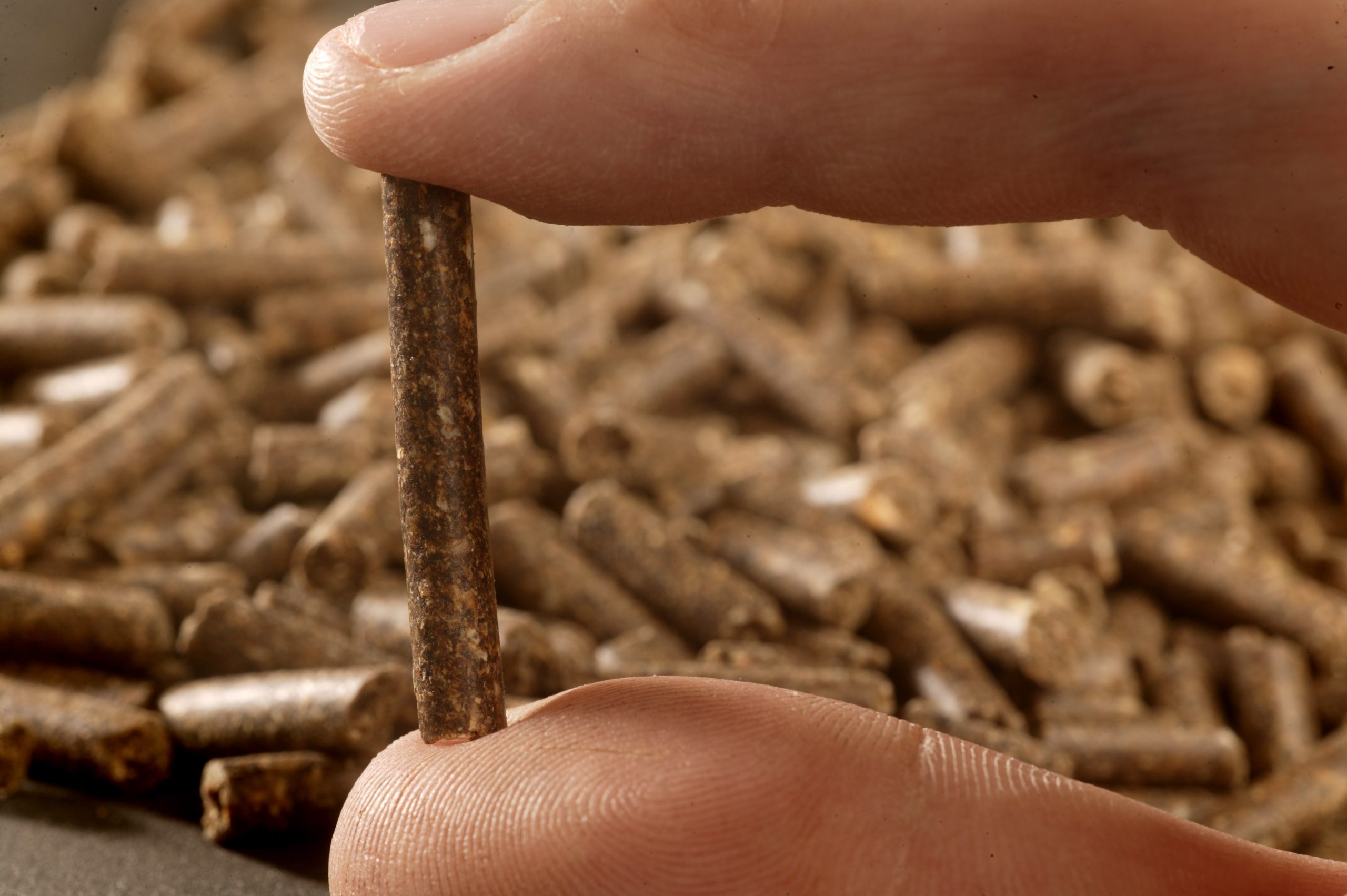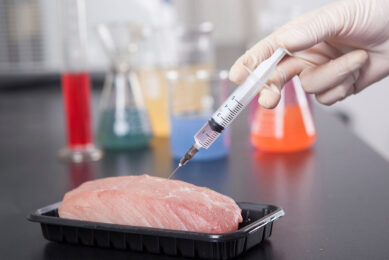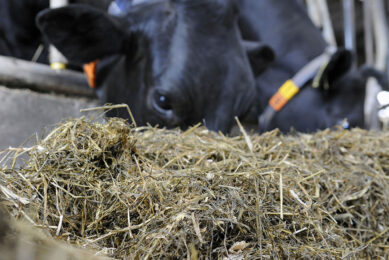The 3 pillars of feed efficiency

Feed efficiency is the result of 3 main components: the quality of raw materials, the diet formulation and the nutrient absorption by the animal. To ensure optimal performance in terms of animal-growth parameters and feed-cost optimisation, a full range of nutritional solutions has to be developed.
The animal industry is not looking for enhanced performance but rather for qualitative, sustainable and profitable animal protein production. This is why nutritionists work on developing new nutritional solutions for an optimal feed efficiency. In recent decades, the improvement of feed efficiency has been based on an enhanced feed intake over a rather short period of time, challenging the nutritionist to get the most out of the feed ingested. From the selection of raw materials, to the absorption of nutrients by the animal, each step should be considered to optimise feed efficiency.
To reach the best animal performances, all requirements should be fulfilled and knowing the feed ingredients’ nutritional values is key to this. Feed ingredients can be very variable from one location to another (Figure 1) due to many factors such as seasonality, harvest, and storage conditions, etc. This variability can have a serious impact on animal performance. Batches of raw materials do not have the same nutritional value, and thus dealing with the variability of the raw materials is crucial to support animal requirements and reach the best performances while considering feed costs. Evaluating each batch of raw material in a timely manner is key to optimising feed formulation.
Figure 1 – Comparison of digestible lysine (%, as fed) of soybean meals from 3 different production countries in 2016.

Adjusting feed formulation
Precise nutrition evaluation (PNE) is the solution to deal with such a variability. This near infrared reflectance (NIR) platform allows the prediction of raw material nutrient content in real-time. PNE predictions (for apparent metabolisable energy and digestible Amino Acids) are based on in vivo measurements that allow for an accurate determination of the variability of the feed ingredients. Such a tool can be used to follow the variability over time, locations, and supplies, thereby helping to make the right decisions in choosing the best options for optimised feed formulations.
Even though well formulated, the feed still contains components that animals are not able to digest. This indigestible fraction represents up to 30% of the feed given to animals. Evaluating the indigestible fraction of feed (quantity and composition) is the starting point of an efficient feed formulation with enzymes as exogenous enzymes target the indigestible fraction of feed. They aim to transform part of this indigestible fraction into available nutrients that animals can use or to get rid of anti-nutritional components that would reduce feed digestibility or feed efficiency. Knowing the substrates and physiological limitations of animals, it is reasonable to expect a potential improvement of the undigested fraction by up to 35% with the use of enzymes. This would be equivalent to a 7% improvement of the global feed digestibility. This potential improvement largely depends on the feed composition and nutritional values of the raw materials.
A tool, Rovabio Advance Predictor, has thus been developed, which calculates the amount of indigestible nutrients present in the feed, according to the raw materials used, and estimates how much of this material could be released using an enzyme solution. The predictor tool outputs the nutritional uplifts of the enzyme solution so that nutritionists can reformulate the diets accordingly.
Figure 2 – Feed conversion ration adjusted by BWG (d 0-42), performance trial in Brazil.

Increasing the digestibility of all nutrients
The feedase is known as a global enzyme solution that is able to attack feed as a whole, resulting in an improvement of the digestibility of all nutrients. The feedase (Rovabio Advance) allows for improving the overall digestibility of feed, including proteins, amino acids, starch, lipids, phosphorus, and so on, by 3% on average. This improvement is mainly possible thanks to the synergistic actions of xylanase and arabinofuranosidase. Those 2 enzyme activities target the arabinoxylan chains, which are important antinutrient compounds, as they limit the accessibility of endogenous enzymes to their substrates. Arabinoxylans are made of a xylose backbone with arabinose side chains. Arabinofuranosidase de-branches arabinose side chains allowing xylanase to bind to its substrate and efficiently break down the structure. Consequently, nutrients are released and available for endogenous enzymes to work on.
Taking advantage of this feedase effect, nutritionists can significantly reduce their feed costs while maintaining performance. In a recent trial conducted in Brazil, broilers were fed 3 diets during the 0-42 day period:
- PC (corn, soybean meal diet),
- NC (PC -3% AME & -3% dAA), and
- NC +Rovabio Advance.
The addition of feedase in the NC diet permitted a recovery of the same level of performance as the PC (Figure 2). In other words, the product released 3% AME and 3% dAA, which birds were able to use. Last but not least, the supplementation allowed for a reduction in feed costs by $ 15/t feed treated.
Improving nutrient absorption
In recent decades, the amount of feed ingested by chickens has largely increased, challenging the intestines’ capacity, and placing further stress on the animals. Indeed, such a huge intake may result in increased inflammation, unbalanced microbiota, and disturbance of the intestinal health status. This will lead to poor absorption and performance losses.
When inflammation occurs, for instance, the intestine is less effective and performs less efficient absorption, and there is an increased maintenance cost in energy and in amino acids through the immune response. With the development of alternative solutions to antibiotic growth promoters, modes of action have been identified, suggesting that efficient probiotics, such as those based on Bacillus subtilis (Alterion), could lower inflammation and thus enhance feed absorption and metabolic transformation. These types of in-feed probiotics can have an impact on the host intestine morphology. As shown in Figure 3, when the product is administered, the length of the intestinal microvilli is significantly improved in both ileum and caecum, thereby enhancing the surface of absorption, allowing the animal to get more out of the feed. Such enhanced intestinal nutrient absorption will result in improved animal performance.
Figure 3 – Microvilli length and performance.

Feed efficiency starts with an accurate knowledge of the quality of the raw materials, allowing the precise adjustment of the feed formulation (PNE). Then, evaluating the indigestible fraction of feed is the next step to better formulate feed with enzymes. Proposing a global enzyme solution to get rid of anti-nutritional factors and reduce the undigested part of the feed will improve feed efficiency. Lastly, taking care of the functioning of the intestine with the addition of probiotics will allow for further improvement of nutrient absorption and thus animal protein production efficiency.
Authors: Sofia Zenagui, Labibé Saleh And Stéphanie Pedrosa, Adisseo Sas, France*
* The article was co-authored by Pierre-André Geraert, Adisseo SAS; and Vincent Jacquier, Aurélie Preynat, Martha Barbier and Cécile Gady, Adisseo CERN, France.
Join 26,000+ subscribers
Subscribe to our newsletter to stay updated about all the need-to-know content in the feed sector, three times a week. Beheer
Beheer









 WP Admin
WP Admin  Bewerk bericht
Bewerk bericht